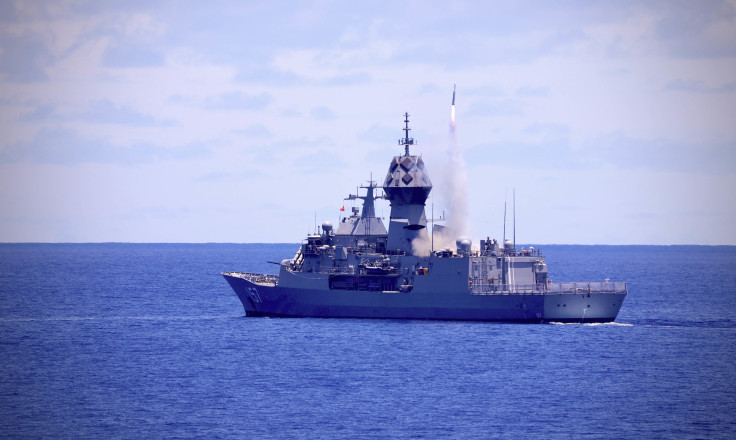Australia Says Navy Not Deterred By Chinese Intimidation In South China Sea
KEY POINTS
- Australia says its operations in the South China Sea will continue.
- China claims most of the South China Sea as part of its territory.
- Western nations have started increasing their military presence in the region following Chinese assertiveness.
The Australian navy is not deterred by the Chinese navy's "unusual behavior" of shadowing the country's warships in the contested waters of the South China Sea, Australia's navy chief Vice Admiral Mark Hammond has said.
"That's unusual behavior. I don't know another navy that does that. It's a departure from what we would call normal maritime behavior. But it hasn't stopped us from conducting our operations," Vice Admiral Hammond, who took over as Chief of Navy in July, said while speaking to the media ahead of a multi-nation naval drill Exercise Kakadu set to start Monday.
In July, ABC News reported that the Australian warship HMAS Parramatta was "closely tracked" by the Chinese military while sailing through international waters claimed by Beijing, and the Australian ship was followed by a Chinese nuclear-powered submarine, a warship and multiple aircraft. Similar encounters were again reported when Australian warships traveled through the disputed sea close to the Spratly Islands, which China claims to be part of its territory.
Earlier this year, the Australian Defense Department had said that the Chinese navy ship fired a laser at one of its surveillance aircraft, putting the lives of the crew in danger. Following the incident, Australia's then prime minister, Scott Morrison, condemned the Chinese action and termed it an "act of intimidation".
Meanwhile, Australia will be hosting Exercise Kakadu, a Navy-led joint biennial international exercise, which is the country's premier bilateral and multilateral engagement activity. This year, it is expected to be the biggest since its inception in 1993, with as many as 19 vessels, 34 aircraft and more than 3000 personnel from 25 countries expected to participate.
Exercise Kakadu follows the recently concluded exercise Pacific Vanguard 2022 hosted by Japan, which saw naval participation from Australia, Canada, South Korea and the U.S.
Military exercises in the Indo-Pacific have increased in recent years, especially with Western nations starting to increase their military presence following the expansion of Chinese military activities in the region. In line with its military doctrine of anti-access/area denial, China has been constructing artificial islands, ports, radar stations and air bases, especially in the South China Sea region surrounding Taiwan.
Meanwhile, Russia and China, along with other nations, have also carried out a large-scale military exercise, Vostok 2022, aimed at showing off defense cooperation in the face of building tensions with the U.S. and allies. Vostok 2022, which concluded Wednesday, was held at seven firing ranges in Russia's far east and the Sea of Japan, and was said to involve more than 50,000 troops and 5,000 weapons units, including 140 aircraft and 60 warships.

© Copyright IBTimes 2025. All rights reserved.






















